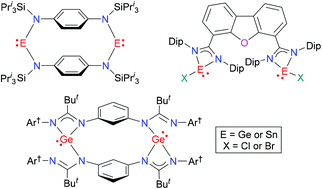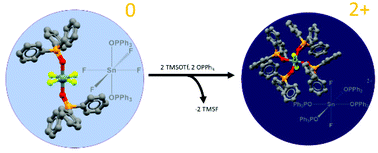We are delighted to announce our new themed collection on Tin: Modern chemistry of an element from antiquity.
This themed collection is part of our 50th volume celebrations and focuses on the inorganic, metal-organic and organometallic chemistry of the heavier Group 14 element, tin, as the 50th element in the periodic table.
As an element, tin has been exploited by humanity for over 5000 years, since it was realised that its alloy with copper provided an even more durable material, bronze. In more recent times, and throughout the half century of Dalton Transactions, tin has played, and continues to occupy, a central role in the development of many of our current perspectives on the bonding and application of the whole gamut of main group element chemistry.
Guest edited by Professor Mike Hill (University of Bath) and Professor John McGrady (University of Oxford), this collection of reports reflects our prevailing interest in an element that has played a central role not only in the development of modern chemistry but in human history. Both of the commonly accessible (II) and (IV) oxidation states are represented by this compendium of reports, which span fundamental studies of bonding and structure to emerging applications in small molecule activation, catalysis and materials science.
|
Professor Mike Hill |

Professor John McGrady |
See the full collection as it grows on our collection webpage, and check out a selection of articles below:
Andrey V. Protchenko, M. Ángeles Fuentes, Jamie Hicks, Caitilín McManus, Rémi Tirfoin and Simon Aldridge*
Dalton Trans., 2021, 50, 9059-9067
Rhys P. King, Madeleine S. Woodward, Julian Grigg, Graeme McRobbie, William Levason and Gillian Reid*
Dalton Trans., 2021, 50, 14400-14410

Kazuki Nakaya, Shintaro Takahashi, Akihiko Ishii, Kajjana Boonpalit, Panida Surawatanawong* and Norio Nakata*
Dalton Trans., 2021, 50, 14810-14819

Palak Garg, Deepak Dange and Cameron Jones*
Dalton Trans., 2021, 50, 9118-9122













